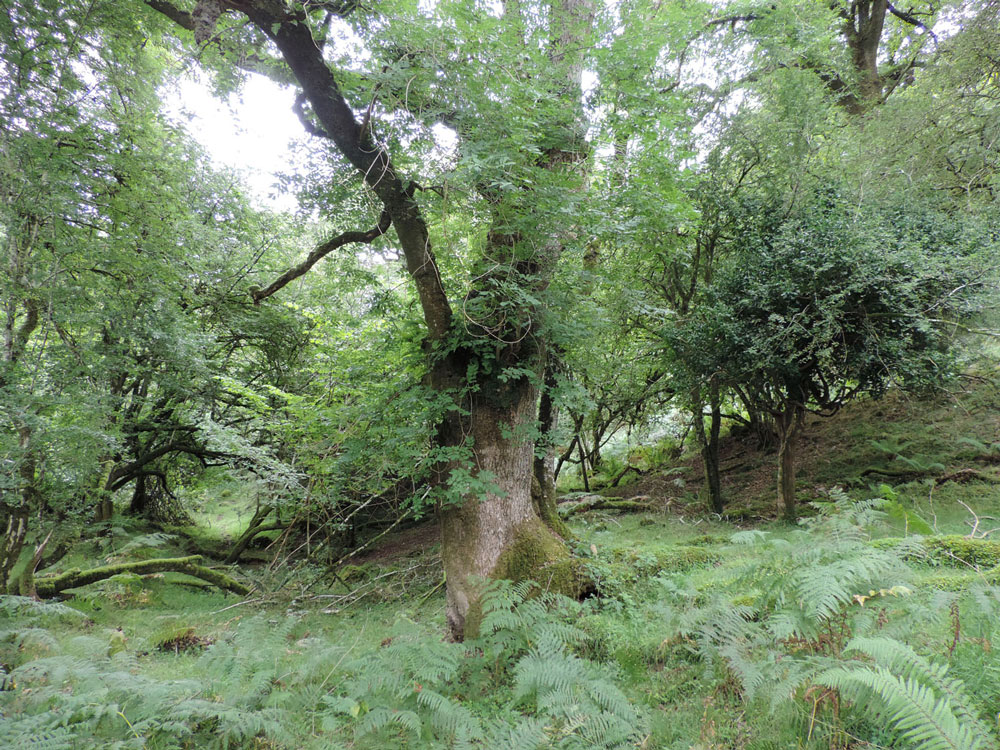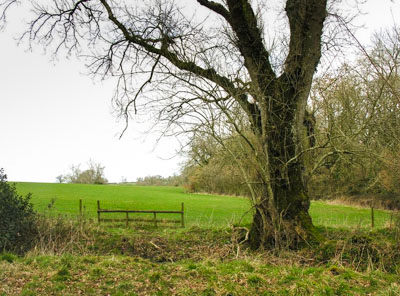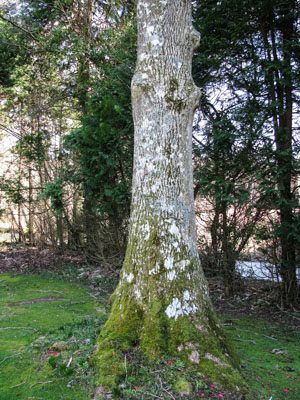
Potential Impact of Ash Dieback for Rare Lichens and Mitigation options
The report Impacts of Ash Dieback Hymenoscyphus fraxineus (Chalara) on priority lichens and potential mitigation options (NECR428) link by N. A. Sanderson and D. Lamacraft has been published by Natural England. This examines the potential impacts of Ash Dieback on Section 41 priority lichens in England along with the Lobarion (woodland base rich bark community) and outlines potential mitigation strategies. The latter are intended to apply across Britain.
Executive summary
The rapid spread of Ash Dieback (Hymenoscyphus fraxineus) poses an existential threat to Ash and the species dependant on it. The impact of Ash Dieback on lichen and received very little attention despite Ash supporting significant lichen assemblages. Thus, the extinction risk to lichen species and the mitigation available was largely unknown. To this end, Natural England commissioned a report to:
- Undertake a vulnerability assessment of Section 41 (Natural Environment and Rural Communities Act 2006) lichen species with varying dependencies on Ash; and
- Identify and evaluate the scope and potential approaches to Ash Dieback mitigation for these species.
In addition, the report also addresses a number of Section 41 actions around mitigating Ash Dieback; trialling the translocation of lichen; and assessing ecological data and mitigation options for Cryptolechia carneolutea which was already considered to be at high risk from Ash Dieback.
Twenty Section 41 species have been evaluated and their extinction risk assessed as:
- Very high risk: Caloplaca flavorubescens, Catapyrenium psoromoides, Pseudocyphellaria intricata, Wadeana dendrographa.
- High risk: Anaptychia ciliaris subsp. ciliaris, Scytinium fragrans (Collema fragrans), Cryptolechia carneolutea, Parmelina carporrhizans.
- Medium-High risk: Toniniopsis separabilis (Bacidia subincompta).
- Medium risk: Arthonia anglica, Bellicidia incompta (Bacidia incompta), Lecania chlorotiza, Ramonia nigra, Schismatomma ricasolii (Schismatomma graphidioides), Teloschistes flavicans.
- Low risk: Nevesia sampaiana, Physcia tribacioides.
- Unknown risk: Caloplaca virescens, Lecidea erythrophaea, Leptogium cochleatum.
In mitigating for the impact of Ash Dieback on threatened lichen, it is recommended that general good practice guidelines regarding Ash Dieback should be followed as a starting point. These include:
- Retain existing Ash trees as long as possible.
- Avoid coppicing, re-pollarding out-of-cycle pollards or tree surgery on veteran Ash.
- Encourage suitable replacement trees.
- Consider treatment of dead Ash. Dead wood is an important resource in woodland ecology, and a proportion of deadwood should be retained (standing and fallen).
However, in terms of epiphytic lichens there are some issues with most general advice for Ash Dieback mitigation, notably:
- a limited appreciation of the time required for newly regenerated/planted trees to become suitable for colonisation by most threatened lichen species which is likely to be more than a century in normal circumstance.
- advice is lacking for grazed woodland habitats or parklands, both of which are key habitats for lichens.
Additional factors that must be considered for mitigating the impact of Ash Dieback on epiphytic lichens:
- knowledge; specifically, a lack of recent knowledge for many sites/lichen species.
- adherence to general good practice management for lichen to optimise conditions for existing populations.
- the most vulnerable areas need to be managed to create/maintain optimum conditions for their lichen interest to give best chance of adaptation, especially maintaining and restoring open well-lit but sheltered conditions around veteran trees within traditionally grazed habitats.
- recognise the important role other native, non-native broadleaves and rock habitats can play. The best mitigation is likely to involve several components, no one tree could really replace Ash.
- adjust management approach to recognise this and encourage/promote a range of Ash alternatives.
Five case-studies are presented which discuss the application of these approaches to specific sites and issues. These are Gowbarrow/Glencoyne Park in Cumbria, Bovey Valley in Devon, Horner in Somerset, Dunsland Park in Devon and Arlington Court in Devon.
Initial BLS Response to Ash Dieback
The implications for lichens of the spread of Chalara Dieback of Ash, a disease of ash trees caused by the fungus Chalara fraxinea, could be very serious. Ash is one of our most common trees, both in woodlands and as isolated trees in fields and hedgerows. The light dappled shade beneath its canopy is ideal for many of the lichens that grow on tree bark and wood. Like elm, the bark of ash has a relatively high pH, a requirement for many lichens. Several of the more ‘demanding’ species that were severely affected by loss of habitat following Dutch Elm Disease found refuge on ash. Now they are further threatened. The mixed ash woods of northern and western Britain are particularly rich lichen habitats, as are wayside trees everywhere, particularly veteran trees that may be many hundreds of years old.

The following statistics, derived from the BLS database, give some idea of the scale of the potential impact. The database contains nearly 31,000 records of lichens and lichenicolous fungi on ash (Fraxinus excelsior), for 582 taxa – 536 lichens (27.5% of the British lichen flora), 31 lichenicolous fungi, and 15 of the non-lichenized fungi that are recorded by lichenologists. Of these, 220 are Nationally Rare or Nationally Scarce and 84 have a conservation status of near-threatened or above:
Nationally Rare (NR) - 59 species Nationally Scarce (NS) - 161 species | Critically endangered (CR) - 3 species Endangered (EN) - 9 species Vulnerable (VU) - 20 species Near-threatened (NT) - 52 species Data deficient (DD) - 13 species |
A very high proportion, 101, also have a status of International Responsibility (IR), meaning that the British population is considered to be of international significance in a European or global context. Also, 50 are priority species listed within the UK Biodiversity Action Plan (BAP), and 6 are given special protection under Schedule 8 of the Wildlife and Countryside Act (1981).

From a conservation point of view, some of the most important from this list are:
- Anaptychia ciliaris subsp. ciliaris NS EN, BAP
- Arthonia anglica NR EN, BAP, IR
- Bellicidia incompta (Bacidia incompta) VU, BAP
- Biatoridium monasteriense NR EN, BAP
- Caloplaca flavorubescens NS EN, BAP
- Caloplaca luteoalba NS EN, S8, BAP
- Caloplaca virescens NS EN, BAP
- Catapyrenium psoromoides NR CR, S8, BAP
- Chaenotheca laevigata NR EN, BAP
- Cryptolechia carneolutea NS EN, BAP, IR
- Fuscopannaria ignobilis NS VU, S8, BAP
- Leptogium cochleatum NS VU, BAP, IR
- Leptogium saturninum NS VU, BAP
- Lithothelium phaeosporum NR NT
- Physcia tribacioides NS VU, S8, BAP
- Ramonia nigra NR CR, IR
- Schismatomma ricasolii (Schismatomma graphidioides) NS VU, BAP, IR
- Scytinium fragrans (Collema fragrans NR EN, BAP, IR)
- Scutula effusa (Bacidia auerswaldii) NR DD
- Teloschistes flavicans NS VU, S8, BAP
- Toniniopsis separabilis (Bacidia subincompta) NS VU, BAP
- Thelenella modesta NR CR, BAP
- Wadeana dendrographa NS NT, BAP, IR
Further Information
Coincident Distribution Maps of Lichen Species occurring on Ash in England, Scotland & Wales.
A paper modelling the coextinction risks to lichens on Ash on the island of Gotland, Sweden
Neil Sanderson has posted some useful notes on Chalara Ash Dieback and lichens on the Wessex Lichen Group website. He also includes some links to relevant information.
Ray Woods has reviewed the likely impacts of Chalara Ash Dieback on lichens in Breconshire and Radnorshire.
A 2012 review paper by Marco Pautasso European ash (Fraxinus excelsior) dieback – A conservation biology challenge
See also the spreadsheet for download below.